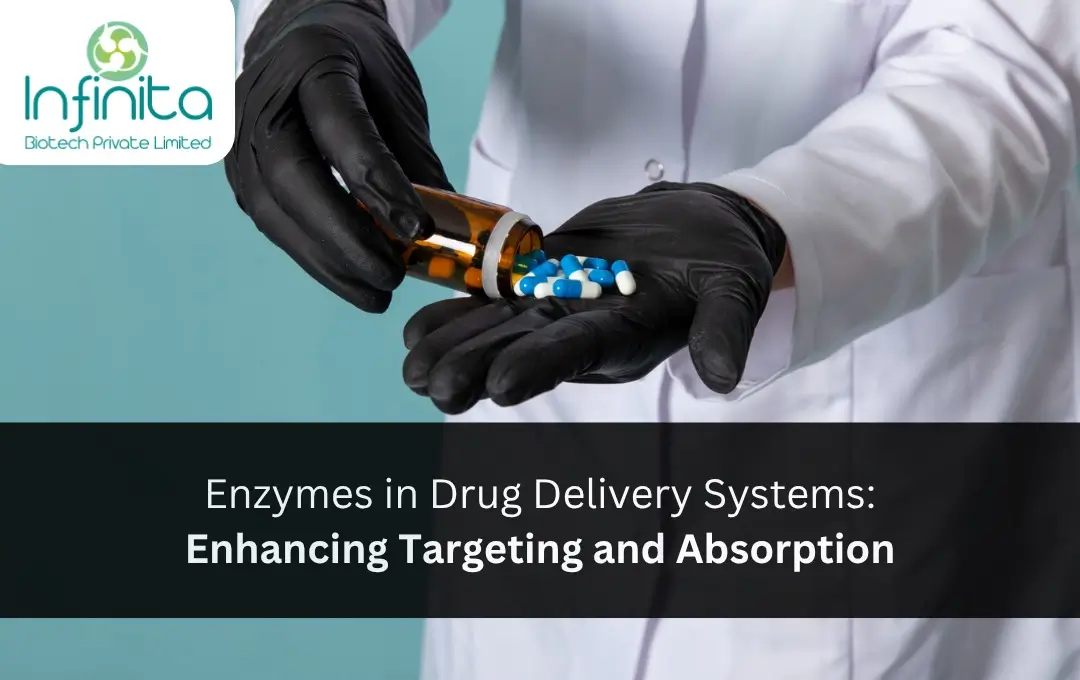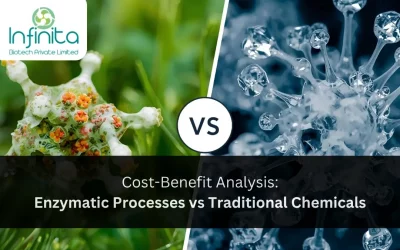Introduction
The landscape of modern therapeutics is rapidly shifting from broad-spectrum treatments to precise, patient-specific interventions. Among the innovations enabling this transformation, pharmaceutical enzymes have emerged as key facilitators of targeted and efficient drug delivery. By harnessing their unique catalytic properties, drug formulations can be designed to activate at the right place, in the right dose, and at the right time.
This evolution marks a significant leap toward reducing drug wastage, enhancing therapeutic efficiency, and minimising side effects—cornerstones of precision medicine.
Understanding Pharmaceutical Enzymes in Drug Delivery
Pharmaceutical enzymes are specialised biocatalysts incorporated into drug delivery systems to improve pharmacological performance. Their core role lies in site-specific action and controlled release, where the enzyme either modifies the drug molecule, protects it from premature degradation, or activates it within the target tissue.
By exploiting the natural specificity of enzymes, drug developers can design delivery systems that respond to precise biochemical triggers, such as pH changes, temperature variations, or the presence of specific substrates in the body.
Mechanisms of Enzyme-Enhanced Drug Delivery
- Enzyme-Substrate Specificity
Enzymes recognise and act on particular molecular structures. This property is harnessed to ensure that a drug remains inactive until it encounters its specific enzymatic trigger at the disease site, thus improving therapeutic targeting. - Enzymatic Activation of Prodrugs
Many prodrugs are designed to be activated only upon enzymatic breakage. This ensures that the active form of the drug is generated precisely where it is needed, reducing systemic exposure. - Controlled Drug Release via Biocatalytic Degradation
In polymer-based drug carriers, embedded enzymes degrade the carrier matrix in a controlled manner, releasing the drug gradually and maintaining optimal therapeutic levels over extended periods.
Advantages of Using Pharmaceutical Enzymes in Drug Delivery Systems
Enhanced Bioavailability
Enzymes can protect drugs from premature breakdown in the gastrointestinal tract, improving absorption and increasing the proportion of the active ingredient that reaches systemic circulation.
Reduced Side Effects
By ensuring site-specific drug release, pharmaceutical enzymes reduce off-target exposure, thereby minimising damage to healthy tissues.
Improved Stability
Some enzymes act as protective shields for unstable drugs, ensuring that they remain effective until they reach the intended site.
Applications Across Therapeutic Areas
Oncology
Enzyme-sensitive carriers release cytotoxic drugs only in tumour microenvironments, which often overexpress certain enzymes. This selective activation enhances anti-cancer efficacy while protecting surrounding healthy cells.
Gastrointestinal Therapies
Enzyme-protected formulations shield drugs from degradation by stomach acid or digestive enzymes, ensuring they reach the intestine intact for optimal absorption.
Neurological Treatments
By modifying carrier molecules with enzymes, certain drugs can cross the blood-brain barrier, opening new possibilities for treating neurodegenerative disorders.
Challenges and Innovations in Enzyme-Based Drug Delivery
Despite their promise, pharmaceutical enzymes face hurdles such as temperature sensitivity, susceptibility to denaturation, and the risk of immunogenic reactions. To counter these challenges, researchers are advancing:
- Nanoenzyme carriers that shield enzymes until they reach the target
- Immobilisation techniques to enhance enzyme stability and reuse potential
- Engineered enzymes with improved tolerance to pH and temperature fluctuations
These innovations are expanding the scope of enzyme-mediated drug delivery, making it more reliable for large-scale pharmaceutical applications.
Future Outlook: Pharmaceutical Enzymes in Next-Generation Therapeutics
The next frontier for pharmaceutical enzymes lies in personalised medicine. By integrating patient-specific biomarkers with enzyme-responsive drug carriers, therapies can be customised for maximum efficacy. Additionally, coupling enzyme-based systems with smart delivery platforms—such as implantable devices or microfluidic pumps—will enable real-time control over dosing and release.
As biotechnology continues to advance, pharmaceutical enzymes are poised to be central to the development of safer, smarter, and more sustainable therapeutics.







